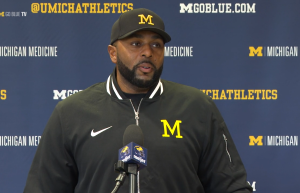
New York officials declared a "State of Emergency" several times during the COVID-19 pandemic. On Friday, Gov. Kathy Hochul made the most recent declaration in response to the newly discovered Omicron variant of COVID-19. What does this imply for New Yorkers?
First and foremost, the World Health Organization (WHO) dubbed the variant B.1.1.529 "omicron" and listed it as a variant of concern on Friday, November 26.
NY's state of emergency effective on Friday
Furthermore, while no omicron cases have been found in the United States yet, Hochul claims there are cases just beyond the state's northern border with Canada. Officials from the city and state health departments said they're keeping an eye out for omicron cases and anticipate seeing some in the near future.
Hochul is concerned about people's fatigue over anti-COVID efforts, given the availability of vaccines and treatments for the virus, but she believes that a greater focus on the omicron variety could assist deliver long-term improvements. According to SILIVE, these are the things you need to know about Hochul's State of Emergency in New York:
- The declaration will take effect on December 3 and will be re-evaluated on January 15 using the most recent COVID-19 data.
- The state of New York will be able to obtain more necessary supplies to combat the pandemic, expand hospital capacity, and manage potential staffing shortages as a result of the emergency declaration.
- In cases where a hospital has fewer than 10% staffed bed capacity, the state Department of Health can use the "surge and flex system" to limit non-essential and non-urgent medical treatments.
- According to Hochul, the state would focus on hospitals in upstate counties, rather than New York City, because there has less capacity for COVID-19 patients.
- Hochul stated on Monday that shutdowns will not be part of her State of Emergency plan. "We're not discussing shutdowns. We're not talking about reinstituting the punitive measures that were necessary when we didn't have any defenses," she clarified.
Masks are required in all healthcare establishments, schools, prisons, and public transportation in New York. She also stated that the goal is to increase New York's vaccination rate, which has risen from 79 percent in August to 90 percent this month among individuals who have received one shot.
Per USA Today, another attempt by the state is to increase access to booster shots; more than 2.2 million boosters have been administered. Counties are asking for the public's help as they examine tighter protocols to prevent the virus from spreading over the holidays and into the winter months.
NY's state of emergency in sync with New Jersey
In response to queries regarding New York Governor Kathy Hochul's decision to renew a state of emergency, Gov. Phil Murphy stated today that the declaration simply aligns New York with New Jersey and does not represent a point of inconsistency between the two states, as per New Jersey Globe.
In other words, after five months of the conflicting policy, New Jersey and New York, which spent much of the pandemic following each other's lead, are again back in relative agreement.
Hochul highlighted the current rise of COVI-19 cases and the development of the as-yet unexplained Omicron variant in her decision to reintroduce the state of emergency, which was first lifted in June, 15 months after the pandemic began.
For the time being, Murphy said, the state will do nothing about the new variant - whose transmissibility and potency are mostly unknown - other than keeping a close eye on it in preparation for its eventual arrival.
While Omicron may have gotten the world's attention, it's the highly infectious Delta variant that's driving up case numbers in New Jersey, according to the governor.
Related Article: New York City Declares State Of Emergency Starting Dec. 3; Non-Essential, Non-Urgent Hospital Procedures Will Be Limited
@YouTube
© 2025 HNGN, All rights reserved. Do not reproduce without permission.








